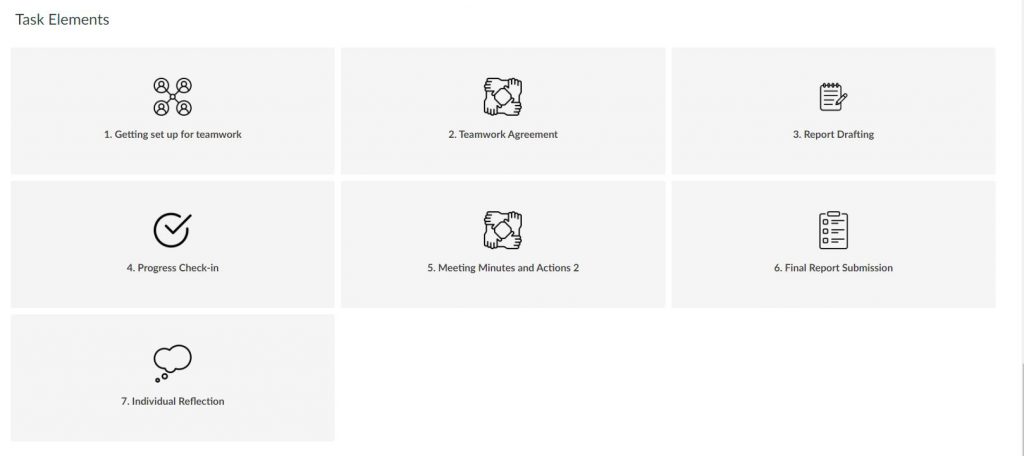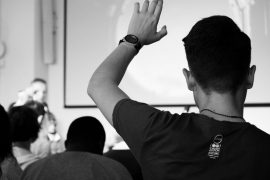In the April Universal Design for Learning (UDL) Chat meeting, we met with Dr Anne Quain from Veterinary Science to talk about the redesign of an assessment in an intensive unit that she co-ordinates. In response to USS data and feedback about the group assessment task, her goals were to improve her student learning and the authenticity of the task as well as minimising the administration of the task. Anne worked with the Educational Innovation team on an Educational Design Accelerator (EDA) project focussed on these goals in the second half of 2022, using a UDL framework to revamp a group assignment in her unit of study VETS6201, Veterinary Practice 2.
In the UDL Chat we focused on exploring the following questions with Anne:
- Who are your learners – what does learner variability look like in your cohort?
- What are the barriers to learning that you are trying to address?
- What solutions were arrived at to remove these barriers?
- How do you know if these solutions have had an impact on your learners?
- How transparent were you with your learners about your teaching and learning design?
- What did you learn and what tweaks or additional changes are needed next time?
Designing for diversity
VETS6201 Veterinary Practice 2 is offered to second year Doctor of Veterinary Medicine students. It focuses on clinical communication and professional reasoning and is offered as a 2-week intensive course at the start of the semester. Due to the nature of the unit, Anne wanted to reduce the administration of the assessment but above all wanted to change a central piece of assessment, a group presentation. Historically this did not engage students or reflect the way veterinarians would be required to respond professionally; in preparing a response to a complaint scenario. Anne wanted to turn it into a more authentic task that would help develop students’ ‘soft’ skills (Anne’s preferred term is ‘power’ skills) necessary in their future practice. The cohort is made up of around 140 very diverse learners coming from different degrees and different walks of life – some have PhDs, some are straight from Bachelors, some have real life experience in different fields (actuaries, speech pathology, pharmacy, etc.), so each learner brings different strengths, experiences and perspectives. This diversity was a driving factor behind the redesign, ensuring that all students could contribute meaningfully and authentically to a team as they would be required to do in a veterinary clinical setting.
Maximising authenticity
One of the barriers to learning identified by Anne was that the group assessment was not authentic it its format. In veterinary practice, complaints are addressed through written requests and responses between the Veterinary Practitioners Board of NSW and other parties, rather than an oral presentation. The presentations were time consuming for students to prepare, and students lost time on the minutiae of presentation skills that would have been better spent on content. With very large groups, between 10-15 each, many students were disengaged and some not able to contribute at all. The weighting of the task at 40% of the unit’s assignments also conflicted with a stated goal of the accrediting body, to prioritise individual assessment wherever possible.
To address these issues, the new assessment was designed to allow more collaboration and reflect an authentic process. The new task included seven elements, some designed to directly support the collaborative process. These included regular group meetings, check-ins with the unit coordinator, a task which allowed students to work collaborative to draft their report over the duration of the unit and not at the last minute, and a group report consistent with that produced in by a bona-fide veterinary team. These were made quickly accessible from an assessment task overview page with quick links. The inclusion of multiple task elements helped students to get to know each other better, in particular their strengths, unique expertise, and challenges. The tasks were scaffolded and guided to eliminate confusion and wasted time, with milestones to avoid last minute completion. Some class time was allocated to these meetings to respect students with busy out-of-class schedules and allow them to be entirely engaged in the group task.

An individual reflection task was also included. This provided students with an opportunity to consider how their professional practice skills had developed both in terms of the content and the collaboration around their case study. It prompted students to consider the resources they would utilise in navigating a similarly complex situation in the real world. The reflection also addressed the issue associated with the weighting of individual tasks vs. collaborative learning, and the anxiety associated with the final exam (previously a hurdle task and now 40% of the final grade rather than 60% in 2022). Despite the potential to appear overwhelming with seven elements instead of just two, the learning goals were very clear, the task was contextualised and authentic, and it didn’t look like a traditional assessment. Anne also produced a video where she explicitly outlined the different elements, their goals and how they supported the learning experience to help students really engage with the task at hand.
How did it go?
Anne noted that while the USS data is yet to be available, students have offered promising informal feedback:
- “the groups worked so much better together than last year”
- “I didn’t have anyone coming to me saying ‘so-and-so let me do all the work’ – there was none of that which was quite lovely”
- “the structure… allowed students to track their progress and I could see how everyone was going. It did make it a lot easier”
- “reflects the reality of the workplace” (on reduced group sizes)
- ” I think that helped a lot. I think people appreciated that”. Nobody came up and complained and said they wanted to do an oral presentation. Not one person” (on being transparent with students about the intent of the redesign)
From the meeting minutes students submitted, check-ins using SRES and the atmosphere in class, Anne noticed strong engagement from students, a more collegial approach to the tasks and higher-level critical thinking skills being developed. The reports were of higher quality and the individual reflections were a valuable contribution to their ongoing professional development.
“I found the whole EDA process rewarding, being able to work directly with Educational Designers to improve our teaching and the experience of learning for our students”
-Dr Anne Quain
With continuous improvement in mind, Anne noted that she has some further tweaks to make to improve how the assessment functions in Canvas to ensure individual and group activities are set accordingly. She will also make some further improvements to the marking rubrics to ensure they are accurately assessing the skills students are developing. Overall, Anne observed that the assessment redesign resulted in more individual accountability and a more equitable and fair learning experience for all.
Want to dive deeper into assessment redesign?
- The Educational Innovation team offers workshops on assessment
- Participate in MPLF10 on Enhancing group work and/or MPLF05 on Assessment and feedback for learning
- Request an EDA of your own to get support from the EI team in redesigning a challenging assessment
Want to know more about Universal Design for Learning?
- Check out our UDL@Sydney Canvas resource to learn more about UDL and how to apply it to your own T&L context.
- Join UDLchat – these 30-minute Zoom chats take place on the first Wednesday of each month. Register here for the next UDL chat.
- Book a UDL consultation and speak 1:1 with a UDL expert about how you might use UDL in your own teaching to improve the learning experiences for all your students.





